By Nick Tate
It was the year of Watergate. The Volkswagen Beetle was the best-selling car in America. Sunbeam’s Mr. Coffee made its debut. Don McLean’s “American Pie” and Helen Reddy’s “I Am Woman” both hit No. 1 on the Billboard U.S. charts. And James Taylor bagged his first Grammy Award for “You’ve got a Friend.”
But 1972 was notable for another historic landmark: It was the year progressive rock hit a high-water mark. It was the precise midpoint of prog’s first decade — bookended by the Beatles’ Sgt. Pepper’s Lonely Hearts Club Band in 1967 (arguably the first prog concept album) and the rise of the Sex Pistols, Ramones and other punk rockers in 1976-77.
Fifty years ago, Yes, Genesis, Jethro Tull, Gentle Giant, ELP and other inventive prog artists all broke new ground, with records that expanded, elevated and defined prog for generations to come. For fans and critics alike, these classic 1972 albums rank among the bands’ best work and the most accomplished examples of progressive music.
Now, these pioneering releases are getting a well-deserved new look (and listen), with retrospective box sets and surviving band members performing the albums live, in their entirety, on new 50th anniversary concert tours.
• Yes, featuring veteran guitarist Steve Howe and drummer Alan White, has just announced plans for a Close to the Edge U.K. tour, performing the band’s legendary 1972 album front to back.
• Carl Palmer’s ELP Legacy (with wunderkind guitarist Paul Bielatowicz replicating Keith Emerson’s original keyboard lines and Simon Fitzpatrick on bass/Chapman stick) has just launched a “Trilogy 50th Anniversary Tour” of the U.K.
• And ex-Genesis guitarist Steve Hackett is gearing up for a fall tour — “Foxtrot at 50 + Hackett Highlights” — with his long-running “Genesis Revisited” project to mark the pivotal 1972 album that established the band as an international force.
“Fifty years ago?” says Hackett today. “It doesn’t feel like those ideas are 50 years old because it was genre-defining, rather than following trends. It still sounds current, now…
“We were a young, struggling band at that time. By the time we were doing Foxtrot, the band was becoming more ambitious. Foxtrot is a must for fans of early Genesis work.”
Foxtrot, Trilogy and Close to the Edge are just three of the iconic albums released in 1972 that marked both a high point and turning point for prog. Here’s a look at the 10 best records released that year (in no particular order) — plus a handful of lesser-known albums that merit at least honorable mention – that helped boost what many regard as the classical music of our times.
Yes: Close to the Edge
By late 1971, Yes was nearing the pinnacle of its career, riding the critical and commercial successes of The Yes Album and Fragile – the band’s two top-grossing and chart-topping albums at the time. For its next album, Close to the Edge, the band reached for the stars. With new guitar virtuoso Steve Howe and keyboard wiz Rick Wakeman on board, Yes created the album that many regard as the British prog godfathers’ crowning achievement and the genre’s finest hour (or 38 minutes or so, anyway). Comprised of three epic suites – the 19-minute title track, 10-minute “And You and I” and nine-minute “Siberian Khatru” – CTTE combines the majestic sweep of orchestral rock, the emotional punch of folk, Eastern sacred music and a wild devil-may-care abandon that is by turns over-the-top and deeply moving. When Jon Anderson delivers the signature line near the close of the title track – “Now that you find, now that you’re whole” – it is a gooseflesh-raising moment that is virtually unrivaled in all of rock music. The fact that this album has inspired the tone-setting sea-going progressive rock music festival known as Cruise to the Edge is a telling testament to this iconic record’s enduring influence and staying power.
Genesis: Foxtrot
For Genesis, the third time was the charm, in terms of album releases. The band’s first two records – 1969’s lackluster From Genesis to Revelation and 1970’s spotty Trespass – featured a few flashes of brilliance, but largely captured a band of talented amateurs in search of a signature sound. But with 1971’s Nursery Cryme, Genesis found its sound and footing. Two key reasons: The recent arrivals of Steve Hackett on guitar and Phil Collins on drums. Yet as strong as Nursery Cryme was, 1972’s Foxtrot made massive leaps in style, composition and performance that went well beyond what had gone before and hinted at the greatness ahead for Genesis. Two tracks in particular spotlight the immense growth in the band’s confidence, collective songwriting skill and ensemble playing: “Watcher of the Skies” and the multi-part, 23-minute epic “Supper’s Ready.” Both tracks sound like no other band before or since, with Peter Gabriel delivering the best theatrical vocal performances of his career. These and on other standouts such as “Can-Utility and the Coastliners” and “Get ’Em Out By Friday” feature a distinct Englishness in tone, lyrical content and musical style. On the whole, Foxtrot also allows each member of this classic lineup of the band to shine — Gabriel, Hackett, Collins, Tony Banks on keys and Mike Rutherford on bass. Foxtrot also includes Hackett’s Bach-like guitar prelude, “Horizons,” an enduring fan favorite that offers a first glimpse of the inspired neo-classical-prog music he would go on to make as a solo artist after leaving the band in 1977.
Jethro Tull: Thick as a Brick
It started off as a goof: Jethro Tull front man Ian Anderson so resented the grandiose pretense of some of the early prog concept albums — famously decrying its producers as pompous “heads-up-their-arses” snobs – that he set out to parody the genre with Thick as a Brick. But the joke missed its mark entirely. The album, released March 3, hit No. 1 on Billboard’s U.S. charts and became one of the best examples of the genre ever made. If you can get past the silly fictional backstory – that it was written by an 8-year-old prodigy, Gerald Bostock – TAAB is an extraordinary musical achievement. It features a single, contiguous piece of music (split over two sides of an LP) and is one of the few Tull albums to feature passages collaboratively written by all members of the band (although Anderson maintained a strong hand in the final arrangements). It marked Tull’s first entry into full-on prog – featuring symphonic, folk and even free-form jazz-rock passages. The follow-up Tull tour delivered the album in its entirety, and then some, often stretching to four hours or more. In recent years, Anderson has said he was partly inspired to write the opus in response to critics who’d (falsely) suggested 1971’s Aqualung had been a “concept album.” In 2012, he even produced a follow-up, Thick as a Brick II, that was less successful (critically and commercially). But the original remains a fan favorite to this day. Notably, it opens with perhaps the best kiss-off to prog critics and detractors ever written: “Really don’t mind if you sit this one out.”
Emerson, Lake & Palmer: Trilogy
By 1972, ELP were on top of the music world, having released three albums that had established the trio as the reigning kings of classically influenced progressive rock – its 1970 self-titled debut, 1971’s Tarkus and Pictures at an Exhibition. Where other prog bands like Yes and Genesis included classical motifs in their music, ELP actually scored and arranged works by Aaron Coplan, Modest Mussorgsky and the like for rock audiences, performing them alongside their own original compositions. Fans loved them for this; some critics hated them. But no one could argue ELP was anything but audacious and inventive. Trilogy is a great example of the band’s ambitious affinity for classically influenced prog. It is sometimes overlooked, perhaps because it was sandwiched between Tarkus and 1973’s Brain Salad Surgery, the two most popular albums in the ELP catalogue. But Trilogy is a masterpiece that stands up well against anything else Keith Emerson, Greg Lake and Carl Palmer produced in the 1970s. It features two classical pieces – rocked up versions of Copland’s “Hoedown” and the Maurice Ravel-inspired “Abaddon’s Bolero” – as well as an Emerson-penned Bach-like fugue in the middle of the album’s epic three-part centerpiece, “The Endless Enigma.” Lake’s folkie hit “From the Beginning,” the darkly complex “Living in Sin” and the comical honky-tonk cowboy ballad, “The Sheriff,” round out the record. In sum, Trilogy may not get as much attention as other ELP works of the 1970s, but it is one of the band’s most complete and balanced studio recordings of the era.
Gentle Giant: Octopus
This British progressive band is a textbook example of a group that deserved wider acclaim during its heyday but suffered from poor promotion. During the 1970s, Gentle Giant never broke beyond cult-level status, but it has since enjoyed a popularity with prog fans it never had during the 10 years it was an active collective. Octopus, its fourth and most experimental record, marked a critical zenith for the band, with founding bassist-violinist-guitarist Ray Shulman calling it Giant’s best record. Released December 1, just eight months after its middling third album, Three Friends, it had a more aggressive, rocky sound that moved beyond the band’s softer, often acoustic-based early works. Octopus showcases everything that set Giant apart from its peers — dazzling musicianship, complex tune-smithing, vocal fugues that would give classical choirs fits and an adventurous balls-with-brains spirit. Highlights include the rock madrigal, “Knots,” the medieval rocker “Racounteur Troubador,” the instrumental “The Boys in the Band” and the fantastical opener “The Advent of Panurge.” In the ensuing eight years, Giant would go on to make great albums, but would never top what the band achieves here.
Moody Blues: Seventh Sojourn
This album, more than any other, made the Moody Blues a staple on FM radio in the U.S., largely on the strength of two hit singles it featured, “I’m Just a Singer (In a Rock and Roll Band” and “Isn’t Life Strange.” It didn’t hurt that 1972 also marked the rerelease of “Nights in White Satin, originally recorded in 1967, which hit No. 2 on the Billboard U.S. charts. Even so, the hit singles weren’t the best reason to dive into this rich, majestic slice of classical pop-prog. After struggling in the trenches for nearly five years, the quintet hit its stride with Sojourn (its eighth release), seamlessly wrapping symphonic musical arrangements around singer-songwriter melodies and cosmic lyrics. The album features a trippy acoustic-folk follow up to the Timothy Leary-inspired “Legend of a Mind” entitled “When You’re a Free Man,” a dreamy fantasy ballad from Justin Hayward, “The Land of Make Believe,” and the achingly beautiful “New Horizons,” featuring one of the prettiest melodies in the Moodies canon.
Electric Light Orchestra
The eponymous debut from the Electric Light Orchestra was arguably the first album to make progressive rock that appealed to multi-generational listeners. Released in the U.S. in March 1972 (December 1971, in the U.K.), ELO was the first effort by Jeff Lynne, Roy Wood and Bev Bevan to create a new radio-friendly, symphonic-rock sound after the dissolution of Wood’s former band, The Move. Influenced heavily by the Beatles, ELO is most notable for its replacement of conventional rock-guitar parts on many tracks with wind instruments and cello riffs, creating a distinctive and melodic baroque-and-roll feel that designed appeal to prog fans and their parents alike. Standout tracks such as “The Battle of Marston Moor,” the “Eleanor Rigby”-like “Look at Me Now” and the up-tempo “10538 Overture” use this approach to great effect. They also set a template for ELO’s signature sound for years to come. On the whole, this album is challenging and complex enough to engage prog fans, yet Lynne and friends manage to ladel in enough pop appeal to make it a sweet slice of pure ear candy.
Pink Floyd – Obscured By Clouds
Pink Floyd’s seventh album was something of a departure from the extended psych-rock instrumentals that had defined the band to this point. For Obscured by Clouds, written as a film score for the French film “La Vallee,” Roger Waters, David Gilmour and Co. made liberal use of acoustic guitars and produced mostly short tracks (nothing clocks in over 6 minutes; the entire album is just over a half-hour long). Most of what’s here are love songs stripped of Water’s trademark biting social commentary. Several tracks – “Free Four,” “Wot’s…Uh the Deal?” and “Stay” – even channel West Coast country-folk, not entirely unlike “Wish You Were Here.” But the propulsive title track, which opens the album, and the atmospheric closer “Absolutely Curtains” would have fit neatly on 1973’s breakthrough Dark Side of the Moon, which Floyd had begun writing before completing work on Obscured by Clouds.
Uriah Heep: Demons and Wizards
The fourth studio album from Uriah Heep marked a remarkable step ahead in composition and quality for this hard-prog rock band. Enhanced by a fantasy cover illustration by Roger Dean, Demons and Wizards showcased the twin talents of David Byron on screamy-lead vocals and Mick Box on searing guitar, with Ken Hensley on keyboards. Heep never pretended to have the symphonic depth or compositional skill of bands like Yes, Genesis and King Crimson. But these guys had a knack for crafting great melodies over hard-rocking prog arrangements that gave bands like Deep Purple and Blue Oyster Cult a run for their money. Tracks like “The Wizard,” “Easy Livin’,” “Circle of Hands” and “Traveler in Time” are classics that cut across multiple genres – hard rock, prog and pop – that still sound fresh and exiting, 50 years on.
Focus: Focus 3
“Hocus Pocus” was the quirky hit song that launched Focus in1971, bringing this Dutch collective an international fanbase. But the band’s third album features the four masterworks that would qualify Focus for the Prog Hall of Fame (if only such a venue existed). This double album showcases the extraordinary chops of wildman organist-flutist-vocalist-composer Thijs van Leer, guitarist Jan Akkerman, drummer Piere van der Linden and bassist Ruiter. Focus 3 features the classic “Sylvia,” a lovely romantic instrumental that perfectly bridges classical and pop music. It also contains the medieval madrigal “House of the King,” with descant recorders, handclaps, acoustic guitars and flute lines that echo early Jethro Tull. But the real showstoppers here are the smoldering slow-building title track and the intense three-part suite, “Anonymous,” containing extended flute and guitar solos that encapsulate the best of what van Leer and Akkerman do.
Honorable mentions:
Roxy Music: This British glam-rock collective might not have been a proper prog outfit, but was at least prog-adjacent. The first album from Bryan Ferry, Brian Eno and friends is a sumptuous feast for the ears, with tracks like “Re-Make/Re-Model” and “Ladytron” delivering a kind of punk-prog prototype that sounds like a revolution in the making.
Nektar: A Tab in the Ocean: This second album from German prog rockers showcases the band at its most progressive. It features some of guitarist Roye Albrighton’s finest fretwork and inspired classically-influenced keyboards from Allan Freeman. The title track also hints at what was to come in 1973, with Nektar’s best album, Remember the Future.
Styx: The American prog band’s first album didn’t set the prog world on fire, but was notable for opening with a 13-minute progressive rock epic, “Movement for the Common Man,” in four parts, including spoken-word passages. It would be several years before Styx hit its stride with what would become American progressive rock classics, Crystal Ball and The Grand Illusion. But this debut set Styx on the path for those future successes.
Wishbone Ash: Argus: This British rock band’s third album was the most progressive record it would ever make, featuring medieval themes and a blend of prog, folk and hard rock. As ever, the chief draw here is the twin-guitar attack of Andy Powell and Ted Turner, which leads the way on most tracks — including the acoustic semi-hit “Blowing Free.”
Triumvirat: Mediterranean Tales: This inventive prog trio gained a reputation for being West Germany’s answer to ELP, and the band’s 1972 debut explains why that comparison is both apt and complimentary. Featuring two full-side suites, Mediterranean Tales is remarkable in its own right for its richness, depth and sparkling musicianship. But, in retrospect, it sounds like an inspired warmup for what would become the band’s masterful second album, Illusions on a Double Dimple, recorded with the Cologne Opera House Orchestra – one of the best, underappreciated prog albums of the 1970s.
The Italians: 1972 was a banner year for the three Italian progressive rock bands that remained under the radar to American audiences for too long. And that’s a shame. Premiata Forneria Marconi’s Per Un Amico and Storia di un Minito, Banco del Mutuo Soccorso’s Darwin and LeOrme’s Uomo di Pezza ¬– all released in 1972 – rank among the best of the bands’ works and stand up alongside the most inventive progressive rock albums ever produced.
Post script: It’s worth noting that tracks from some of these ground-breaking albums were widely featured on FM and college radio in 1972, and were likely inspirations for other artists who were then working on a slew of prog masterworks that arrived in 1973.
Among them: Pink Floyd’s Dark Side of the Moon (which the band began performing live in 1972 before recording on the album began); Tull’s A Passion Play, ELP’s Brain Salad Surgery, King Crimson’s Larks Tongues in Aspic, Genesis’s Selling England by the Pound and the controversial Yes double-album Tales From Topographic Oceans.
But that’s another story, for another time…

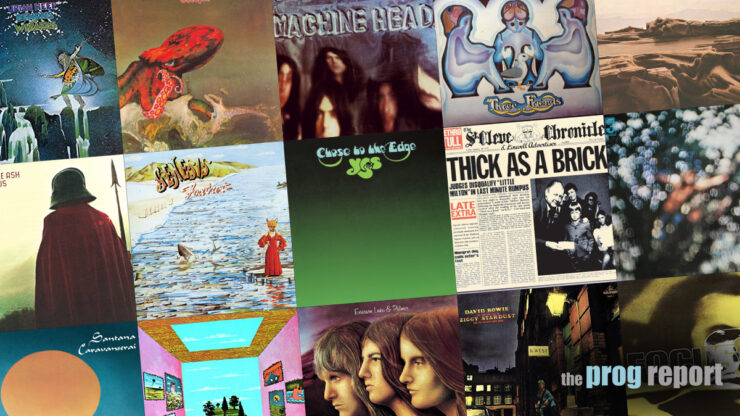
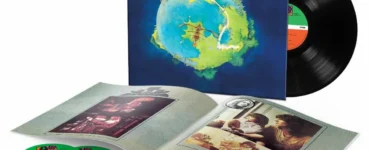
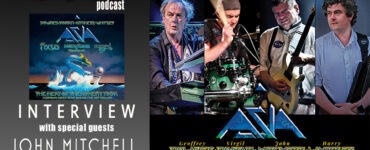
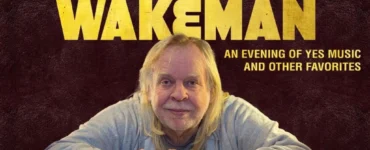


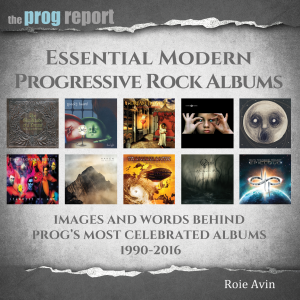
Nektar ain’t a German band ?…
They use to be more popular in Germany than in their native England; anyway an awesome group with great music…. the album “Remember the Future” is fantastic !!